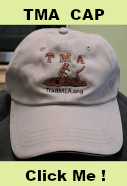thats what i was told by GM , hank , when i called about a barrel .
Supposedly, there are plans to start turning out BP barrels again after the first of the year .
So if a GM barrel is what someone is after they should be able to get one soon .
As to the trigger differences.
Early triggers are a two piece set up .
a) the trigger
b) the trigger plate
The trigger pivot pin is placed into the stock and located under the lock .
. The tang bolt comes down and threads into the trigger plate .
When the trigger is place into the stock , it must first be slipped through the trigger plate . Then its slid into the stock and the pivot pin placed.
Now the trigger plate is secured to the stock .
Ok so , that info is probably all a given that most folks know .
BUT what a lot donít seem to realize is there are more things at play .
One consideration is how the trigger bar engages the sear . How that engagement effects trigger pull .
Some builders like to have an angled approach to the trigger and sear engagement. In doing so you can get a back angled trigger . Others like to have a high pinned trigger. They then solve the engagement issue by filing on the trigger bar.
Next is the stop of the trigger Ö if the trigger doesnít have a stop or its bar is not longer then the slit in the trigger plate , what will happen is you will have a lot of slop in the trigger pull , prior to the trigger engaging the sear . The trigger will also be able to pivot all the way forward allowing the trigger bar to drop below the trigger plate. .
The fix for this can still be seen today in original Muzzle loading SXS and early Breech loading SXS..
If you look at these , what you will find is that there is a type of pull stop . Most common is the finger plate of the trigger . Its filed so as to not allow the shooter to over pull the trigger . IE you can only pull the trigger so far and finger plate contacts the trigger plate .
With the trigger then pinned low in the lock mortise, you end up with an angle rear trigger . That is in a natural arc of the sear and trigger rotation . As such the bottom of the trigger bar is then filed away tell the trigger plate can be set to its inlet properly . While at the same time giving full contact of the trigger to the sear , when at the full cock ..
When done properly you get a better geometry to the trigger pull , thatís light and fast with little to no slop .. With out dealing with angles of engagement of a higher pinned trigger .
Now I have seen a couple very early originals with what I would call , match lock type triggers . Im not sure what those were all about other then an they were on rifles with very little drop . So it may have been a builders way of allowing for a softer squeezing trigger.
As to the timeframe of set triggers and single triggers of both back and forward placements . A quick look through both Volume 1 and 2 of rifles of Colonial America . Will yield some very interesting documentation .
You will find double sets being shown on 18th century Jaegersí and even a couple on 18 to 19 century long rifles that date right around the turn of the century .
If you go slow , and look closely , you will also find a few with single set triggers . often time the set trigger isnt mentioned . Yet having a feather screw ,showing in the photos , tells the tail .
If one really takes the time and studies the rifles profiled . Looking specifically at the triggers . You can see how different makers made the stops for their pinned triggers . a lot of the time the fancy scrolls are nothing more then a dressed up trigger stop .
Another thing I recommend to people to do when they are looking at photos of originals guns like in the RCA . Use a magnifying glass or a pair of Loupes to study the photos .
You will be surprised at the small details that are visible under magnification . But not visible to the eye




